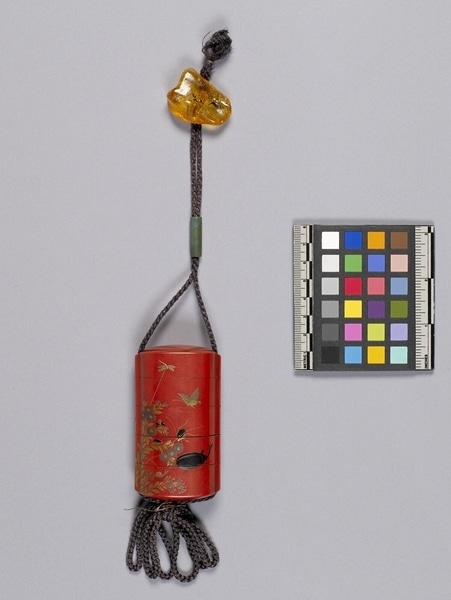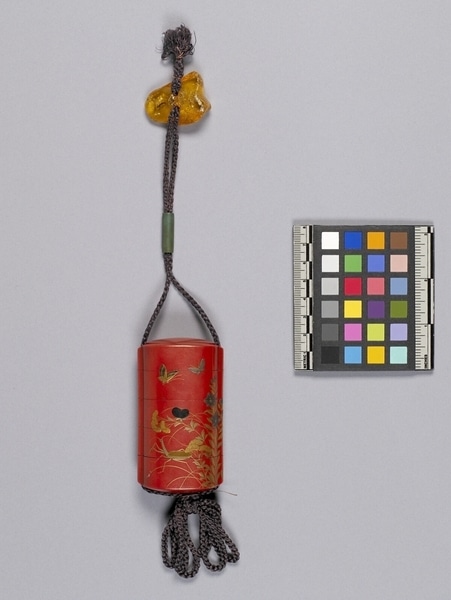Carrying Case Item Number: N2.966 from the MOA: University of British Columbia



Description
Red, lacquered, oval-shaped case known as inrō (印籠), with five fitted sections stacked vertically. A purple cord tied at the base is threaded through two channels on either side, holding the five parts together. The fibre cord extends above the top of the box, with the two ends tied together and held in place with a cylindrical green ojime and an amber-like netsuke (根付). Designs featuring insects and flowers are lacquered and inlaid, predominantly in gold and black on the exterior; the interior is speckled red-orange and gold. The amber-like netsuke has two black insects painted on it.
History Of Use
Used by men, attached to an obi sash. Originally used to carry seals, but later other small items, such as medicine. During the Edo period (1603–1868), they became popular as a man’s accessory, without carrying anything inside. Later they become collectibles, from the late Edo period onwards.
Item History
- Made in Japan
- Owned by Mary E. Lipsett before June 15, 1949
- Received from Mary E. Lipsett (Donor) on June 15, 1949
What
Who
- Culture
- Japanese
- Previous Owner
- Mary E. Lipsett
- Received from
- Mary E. Lipsett (Donor)
Where
- Holding Institution
- MOA: University of British Columbia
- Made in
- Japan
When
- Ownership Date
- before June 15, 1949
- Acquisition Date
- on June 15, 1949
Other
- Condition
- good
- Current Location
- Case 79
- Accession Number
- 2282/0025